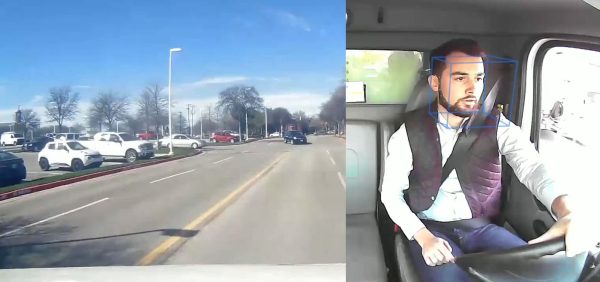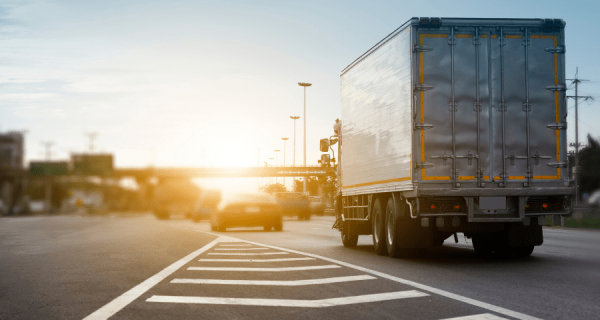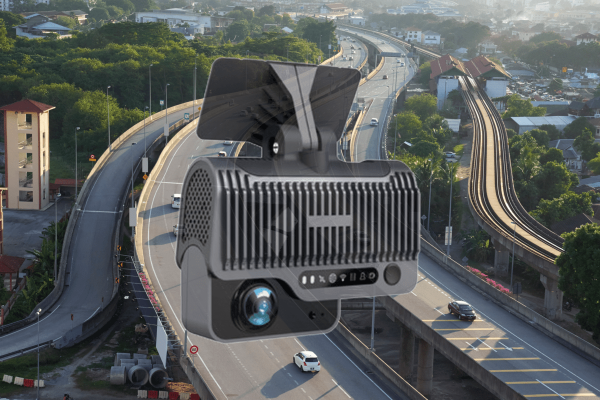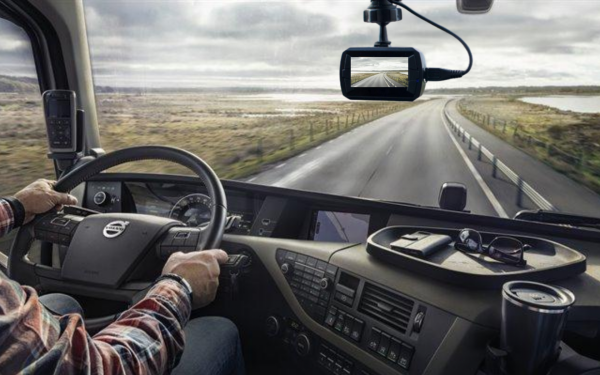
Artificial Intelligence (AI) is changing the way we live and work. It’s also changing the way we drive. AI dash cams are increasing in popularity because they offer a number of advantages over traditional dash cams.
What Are AI Dash Cams?
Similar to traditional single or dual-facing dash cameras, AI-powered dash cameras use advanced technology to integrate with existing telematics systems, recording footage as well as predicting patterns, behaviours and road conditions to anticipate and even avoid traffic incidents.
The Federal Motor Carrier Safety Administration (FMCSA) estimates that 87% of all traffic accidents are preventable. AI and predictive analysis provide fleet managers with better insights into events on the road and how their drivers respond to them.
When fleet managers use these data sets to understand why and how accidents occur, they can better enhance – and enforce – safety protocols and compliance.
What Events Trigger AI Dash Cams?
AI dash cams record events both on the road and within the cab, providing your drivers with a 360-degree view of the road ahead and the vehicle from every angle.
Some dash cameras record continuously, whereas others also respond to specific triggers, which is often referred to as “event-based” recordings.
Below are some incidents that may trigger an event-based recording:
Following Another Vehicle Too Closely
AI dash cams use video and motion sensors to monitor the distance between a vehicle and the one in front of it. By calculating the spatial area between the two vehicles, the dash cam can detect when a driver is following too closely and start recording.
This is incredibly important in preventing tailgating and rear-end collisions, some of the most common occurrences on the road.
Harsh Driving
Harsh driving is generally defined as operating a moving vehicle in an aggressive or sporadic way. This can include swerving, hard braking, sudden acceleration, or sharp turns.
Through motion sensor technology, AI dash cams can detect when a driver is driving recklessly or dangerously, and will start recording to capture the event. This footage can be used to help correct the driver’s behavior and prevent future accidents.
Traffic Light Violations
Many fleet managers identify running red lights as one of their biggest pain points, and one of the hardest to mitigate with their drivers. “Running the red” is not only incredibly dangerous, but can also result in costly tickets and accidents.
AI dash cams can help prevent these incidents by monitoring the traffic lights ahead and alerting drivers when they’re about to turn red.
The camera will start recording when it detects that the driver is running a red light, so that footage can be sent to the fleet manager for immediate review and correction.
Distracted Driving
According to data from the National Highway Traffic Safety Administration (NHTSA), over 3,100 people died as the result of distracted driving in 2020.
According to the Center for Disease Control (CDC), distractions can be manual, such as when a driver takes their hands off the wheel; visual, (if a driver takes their eyes off the road) and cognitive (anything that takes a driver’s focus off of driving).
AI dash cams can help combat this problem by sending real-time alerts to drivers when they lose focus and redirect them to the road ahead.
How Fleets Can Use AI Dash Cams
The primary purpose of an AI dash cam is to protect vehicles and drivers. To that end, video footage captured by these cameras has a number of different applications:
Performance Review and Improvement
One of the best uses for AI dash cam video is driver performance review. Video footage lays bare all instances of aggressive or distracted driving, allowing fleet managers to identify which drivers need improvement.
Over time, this can lead to significant improvements in safety for the entire fleet.
Safety Program Design and Implementation
In addition to performance reviews, AI dash cams can be used to design and implement new safety programs based on repeat offences.
For example, if a fleet manager notices that a number of drivers are running red lights, they can use this footage to design a new safety program specifically aimed at preventing this behaviour.
Footage can also be used to educate drivers on the dangers of distracted driving and the importance of staying focused on the road, further entrenching safety culture within an organization.
Insurance Claims
In the event of an accident, AI dash cams can support insurance claims and help assign liability. Video footage can be used to prove that a driver was not at fault for an accident, or to help resolve insurance disputes.
Having a comprehensive and detailed record of an accident can be invaluable in the claims process. Furthermore, many insurance companies now incentivize the use of AI dash cams for their clients, including lower premiums.
AI dash cams are an increasingly popular tool for fleet managers and drivers alike. AI innovation improves safety on the road and connects fleets.
As this technology evolves, we can expect an increase of AI dash cams on the road and a decline in the number of accidents and distractions as a result.


